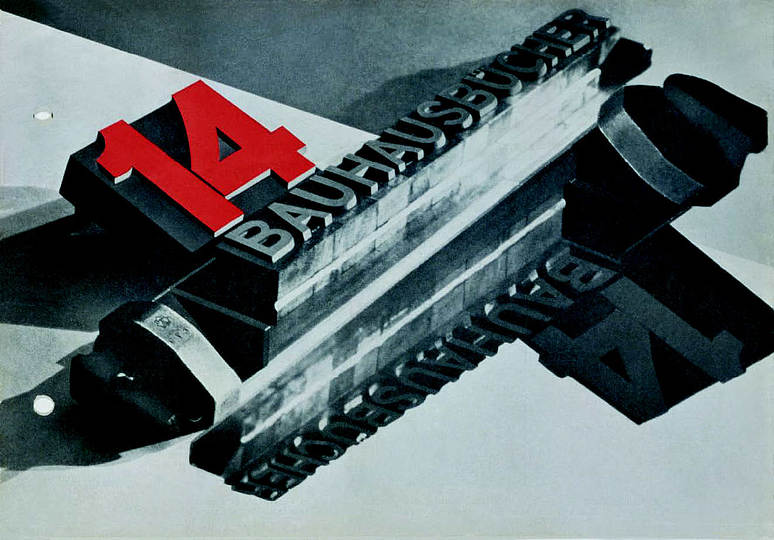Bauhaus: Typography and Advertisement
Founder: Kenneth Brown
Aleyna Ünal
ana david
Antoaneta Dimitrova
Antonio perez
Ash Baker
AshleyBone
C-Trane
DANIEL GHITA
Elena Slaukova
Federico Rovetta
Flavia Palladino
galerie.lab.on.off
George Moraitis
Gyde Shepherd
JAY J
Joao Ferreira Borges
JOLA
joud alrubayan
LiviaM
Marcello Barcelos
Marco Tumino
Navindu
pamela
Paolo Tomio
Peter Fink
seearts1992
ssw7
Steve Messer
ynkindustries
Αθανάσιος Παπακωνσταντίνου
Геннадий
ana david
Antoaneta Dimitrova
Antonio perez
Ash Baker
AshleyBone
C-Trane
DANIEL GHITA
Elena Slaukova
Federico Rovetta
Flavia Palladino
galerie.lab.on.off
George Moraitis
Gyde Shepherd
JAY J
Joao Ferreira Borges
JOLA
joud alrubayan
LiviaM
Marcello Barcelos
Marco Tumino
Navindu
pamela
Paolo Tomio
Peter Fink
seearts1992
ssw7
Steve Messer
ynkindustries
Αθανάσιος Παπακωνσταντίνου
Геннадий
Antoaneta Dimitrova
Antonio perez
Ash Baker
AshleyBone
C-Trane
DANIEL GHITA
Elena Slaukova
Federico Rovetta
Flavia Palladino
galerie.lab.on.off
George Moraitis
Gyde Shepherd
JAY J
Joao Ferreira Borges
JOLA
joud alrubayan
LiviaM
Marcello Barcelos
Marco Tumino
Navindu
pamela
Paolo Tomio
Peter Fink
seearts1992
ssw7
Steve Messer
ynkindustries
Αθανάσιος Παπακωνσταντίνου
Геннадий
Antonio perez
Ash Baker
AshleyBone
C-Trane
DANIEL GHITA
Elena Slaukova
Federico Rovetta
Flavia Palladino
galerie.lab.on.off
George Moraitis
Gyde Shepherd
JAY J
Joao Ferreira Borges
JOLA
joud alrubayan
LiviaM
Marcello Barcelos
Marco Tumino
Navindu
pamela
Paolo Tomio
Peter Fink
seearts1992
ssw7
Steve Messer
ynkindustries
Αθανάσιος Παπακωνσταντίνου
Геннадий
Ash Baker
AshleyBone
C-Trane
DANIEL GHITA
Elena Slaukova
Federico Rovetta
Flavia Palladino
galerie.lab.on.off
George Moraitis
Gyde Shepherd
JAY J
Joao Ferreira Borges
JOLA
joud alrubayan
LiviaM
Marcello Barcelos
Marco Tumino
Navindu
pamela
Paolo Tomio
Peter Fink
seearts1992
ssw7
Steve Messer
ynkindustries
Αθανάσιος Παπακωνσταντίνου
Геннадий
AshleyBone
C-Trane
DANIEL GHITA
Elena Slaukova
Federico Rovetta
Flavia Palladino
galerie.lab.on.off
George Moraitis
Gyde Shepherd
JAY J
Joao Ferreira Borges
JOLA
joud alrubayan
LiviaM
Marcello Barcelos
Marco Tumino
Navindu
pamela
Paolo Tomio
Peter Fink
seearts1992
ssw7
Steve Messer
ynkindustries
Αθανάσιος Παπακωνσταντίνου
Геннадий
C-Trane
DANIEL GHITA
Elena Slaukova
Federico Rovetta
Flavia Palladino
galerie.lab.on.off
George Moraitis
Gyde Shepherd
JAY J
Joao Ferreira Borges
JOLA
joud alrubayan
LiviaM
Marcello Barcelos
Marco Tumino
Navindu
pamela
Paolo Tomio
Peter Fink
seearts1992
ssw7
Steve Messer
ynkindustries
Αθανάσιος Παπακωνσταντίνου
Геннадий
DANIEL GHITA
Elena Slaukova
Federico Rovetta
Flavia Palladino
galerie.lab.on.off
George Moraitis
Gyde Shepherd
JAY J
Joao Ferreira Borges
JOLA
joud alrubayan
LiviaM
Marcello Barcelos
Marco Tumino
Navindu
pamela
Paolo Tomio
Peter Fink
seearts1992
ssw7
Steve Messer
ynkindustries
Αθανάσιος Παπακωνσταντίνου
Геннадий
Elena Slaukova
Federico Rovetta
Flavia Palladino
galerie.lab.on.off
George Moraitis
Gyde Shepherd
JAY J
Joao Ferreira Borges
JOLA
joud alrubayan
LiviaM
Marcello Barcelos
Marco Tumino
Navindu
pamela
Paolo Tomio
Peter Fink
seearts1992
ssw7
Steve Messer
ynkindustries
Αθανάσιος Παπακωνσταντίνου
Геннадий
Federico Rovetta
Flavia Palladino
galerie.lab.on.off
George Moraitis
Gyde Shepherd
JAY J
Joao Ferreira Borges
JOLA
joud alrubayan
LiviaM
Marcello Barcelos
Marco Tumino
Navindu
pamela
Paolo Tomio
Peter Fink
seearts1992
ssw7
Steve Messer
ynkindustries
Αθανάσιος Παπακωνσταντίνου
Геннадий
Flavia Palladino
galerie.lab.on.off
George Moraitis
Gyde Shepherd
JAY J
Joao Ferreira Borges
JOLA
joud alrubayan
LiviaM
Marcello Barcelos
Marco Tumino
Navindu
pamela
Paolo Tomio
Peter Fink
seearts1992
ssw7
Steve Messer
ynkindustries
Αθανάσιος Παπακωνσταντίνου
Геннадий
galerie.lab.on.off
George Moraitis
Gyde Shepherd
JAY J
Joao Ferreira Borges
JOLA
joud alrubayan
LiviaM
Marcello Barcelos
Marco Tumino
Navindu
pamela
Paolo Tomio
Peter Fink
seearts1992
ssw7
Steve Messer
ynkindustries
Αθανάσιος Παπακωνσταντίνου
Геннадий
George Moraitis
Gyde Shepherd
JAY J
Joao Ferreira Borges
JOLA
joud alrubayan
LiviaM
Marcello Barcelos
Marco Tumino
Navindu
pamela
Paolo Tomio
Peter Fink
seearts1992
ssw7
Steve Messer
ynkindustries
Αθανάσιος Παπακωνσταντίνου
Геннадий
Gyde Shepherd
JAY J
Joao Ferreira Borges
JOLA
joud alrubayan
LiviaM
Marcello Barcelos
Marco Tumino
Navindu
pamela
Paolo Tomio
Peter Fink
seearts1992
ssw7
Steve Messer
ynkindustries
Αθανάσιος Παπακωνσταντίνου
Геннадий
JAY J
Joao Ferreira Borges
JOLA
joud alrubayan
LiviaM
Marcello Barcelos
Marco Tumino
Navindu
pamela
Paolo Tomio
Peter Fink
seearts1992
ssw7
Steve Messer
ynkindustries
Αθανάσιος Παπακωνσταντίνου
Геннадий
Joao Ferreira Borges
JOLA
joud alrubayan
LiviaM
Marcello Barcelos
Marco Tumino
Navindu
pamela
Paolo Tomio
Peter Fink
seearts1992
ssw7
Steve Messer
ynkindustries
Αθανάσιος Παπακωνσταντίνου
Геннадий
JOLA
joud alrubayan
LiviaM
Marcello Barcelos
Marco Tumino
Navindu
pamela
Paolo Tomio
Peter Fink
seearts1992
ssw7
Steve Messer
ynkindustries
Αθανάσιος Παπακωνσταντίνου
Геннадий
joud alrubayan
LiviaM
Marcello Barcelos
Marco Tumino
Navindu
pamela
Paolo Tomio
Peter Fink
seearts1992
ssw7
Steve Messer
ynkindustries
Αθανάσιος Παπακωνσταντίνου
Геннадий
LiviaM
Marcello Barcelos
Marco Tumino
Navindu
pamela
Paolo Tomio
Peter Fink
seearts1992
ssw7
Steve Messer
ynkindustries
Αθανάσιος Παπακωνσταντίνου
Геннадий
Marcello Barcelos
Marco Tumino
Navindu
pamela
Paolo Tomio
Peter Fink
seearts1992
ssw7
Steve Messer
ynkindustries
Αθανάσιος Παπακωνσταντίνου
Геннадий
Marco Tumino
Navindu
pamela
Paolo Tomio
Peter Fink
seearts1992
ssw7
Steve Messer
ynkindustries
Αθανάσιος Παπακωνσταντίνου
Геннадий
Navindu
pamela
Paolo Tomio
Peter Fink
seearts1992
ssw7
Steve Messer
ynkindustries
Αθανάσιος Παπακωνσταντίνου
Геннадий
pamela
Paolo Tomio
Peter Fink
seearts1992
ssw7
Steve Messer
ynkindustries
Αθανάσιος Παπακωνσταντίνου
Геннадий
Paolo Tomio
Peter Fink
seearts1992
ssw7
Steve Messer
ynkindustries
Αθανάσιος Παπακωνσταντίνου
Геннадий
Peter Fink
seearts1992
ssw7
Steve Messer
ynkindustries
Αθανάσιος Παπακωνσταντίνου
Геннадий
seearts1992
ssw7
Steve Messer
ynkindustries
Αθανάσιος Παπακωνσταντίνου
Геннадий
ssw7
Steve Messer
ynkindustries
Αθανάσιος Παπακωνσταντίνου
Геннадий
Steve Messer
ynkindustries
Αθανάσιος Παπακωνσταντίνου
Геннадий
ynkindustries
Αθανάσιος Παπακωνσταντίνου
Геннадий
Αθανάσιος Παπακωνσταντίνου
Геннадий
Геннадий
Typography and advertising played a large role at the Bauhaus in Weimar. The typographical and advertising designs of the Masters Johannes Itten, Oskar Schlemmer, and László Moholy-Nagy, and the students Joost Schmidt, Josef Albers, and Herbert Bayer, demonstrate that the Bauhaus in Weimar was already promoting advertising graphics. The 1923 Bauhaus Exhibition provided the necessity to make an impact in the typographic sector. László Moholy-Nagy introduced elements of a contemporary “elementary typography”.Moholy-Nagy was working toward a scientifically functional design, which overcame purist aesthetics. As head of the workshop for printing and advertising, Herbert Bayer integrated economic, technical, psychological and organisational aspects in a holistic approach. The combination of a printing and advertising workshop, new and unconventional at the time, met the requirements for an uninterrupted sequence from design to execution of a typographic product. Herbert Mayer, like Josef Albers, referred to the simplest geometric elements. He took standards developed elsewhere on paper and type as a starting point for considerations which were oriented towards a complex standardisation of communication media. On this basis, the first advertising designs were produced in the Dessau workshop. This included a Catalogue of Samples, an advertising prospectus of selected Bauhaus products. Functional, and also advertising-technical, psychological, and linguistic criteria made up the background to the choice of type, arrangement of images and typeset design. It was the printing and advertising workshop that initiated the type reform at the Bauhaus. Along with the consequent use of small initial letters, the changes were apparent in the design of the letterhead. Bayer tried to develop a unified appearance for the Bauhaus (he redesigned the business papers of the Bauhaus three times before 1927). The workshop, which was now called the “Advertising Department”, became one of the main workshops of the Bauhaus in 1927 and was henceforth to educate so-called “advertising experts.”
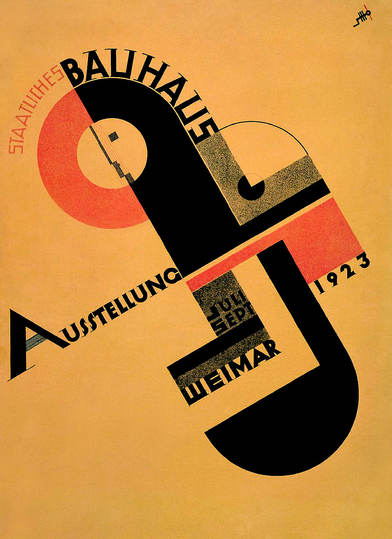
Joost Schmidt, Poster for the Bauhaus Exhibition in Weimar, 1923
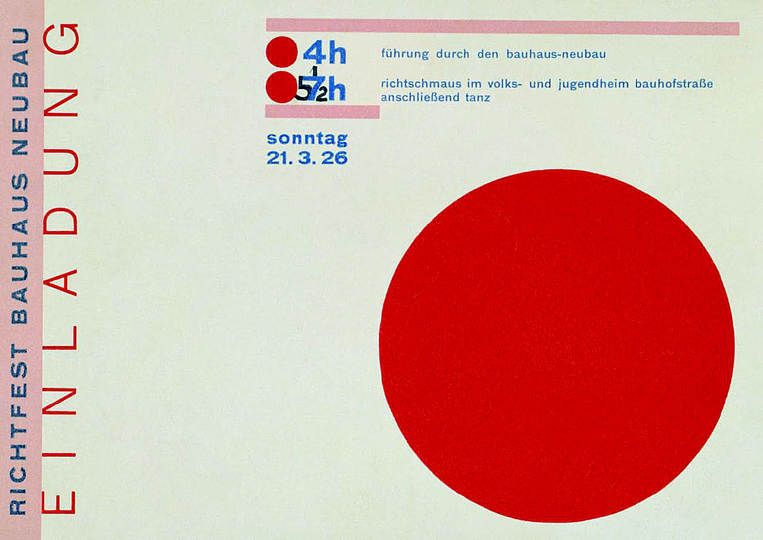
Herbert Bayer, Invitation to the topping-out ceremony for the new Bauhaus building in Dessau, 1926
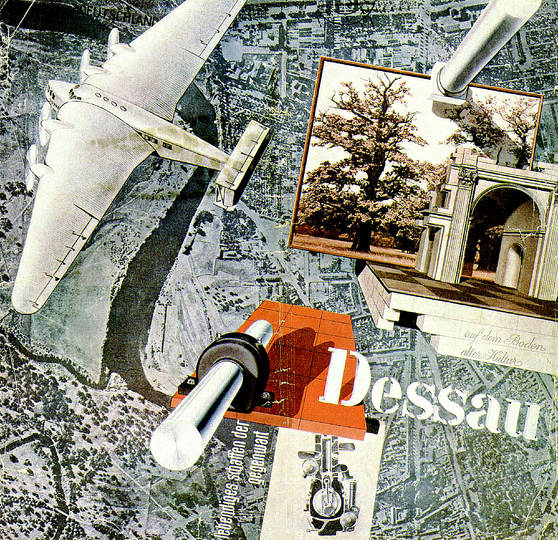
Joost Schmidt, Pamphlet for the city of Dessau, title page, 1930/31
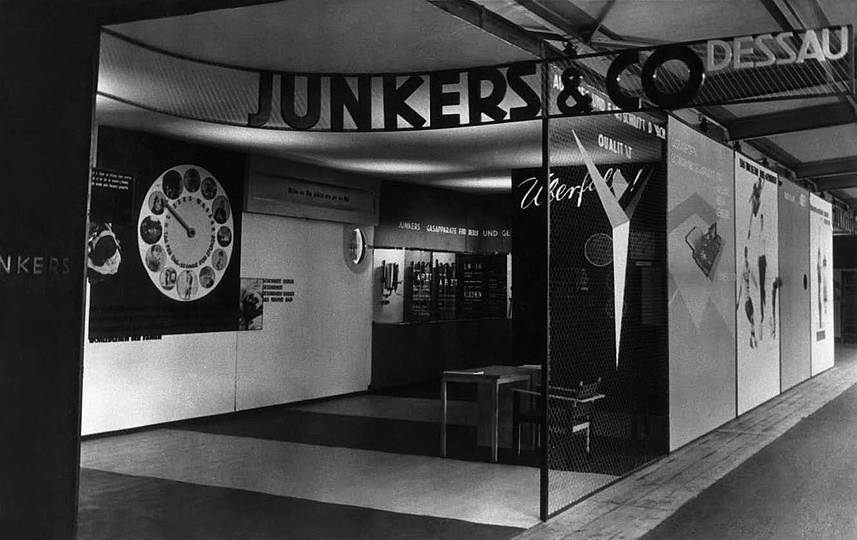
Joost Schmidt and Xanti Schawinsky, Junkers stand at the exhibition “Gas and Water”, Berlin, 1929, photograph
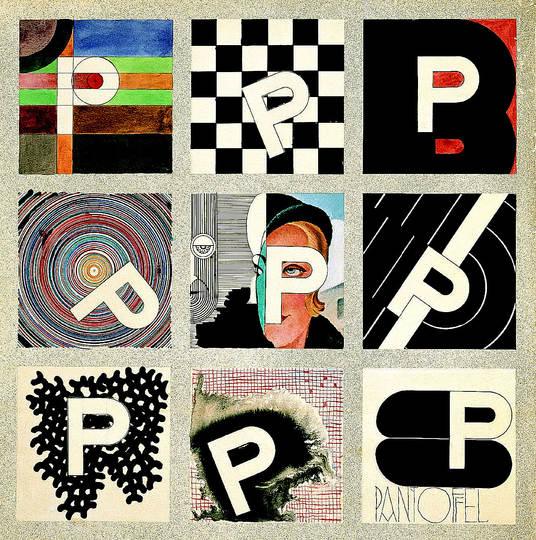
Joost Schmidt, Creating contrasts from a given optic element, 1931
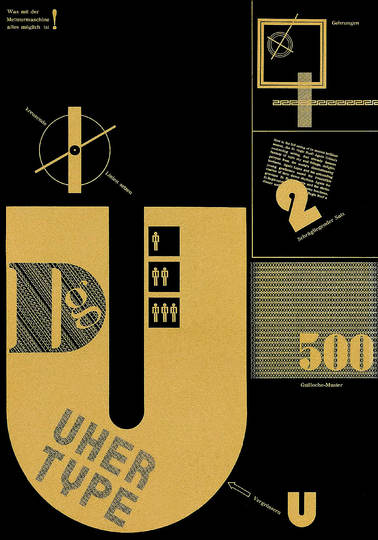
Joost Schmidt, Publicity sheet for Uher Type – Lumitype, 1932
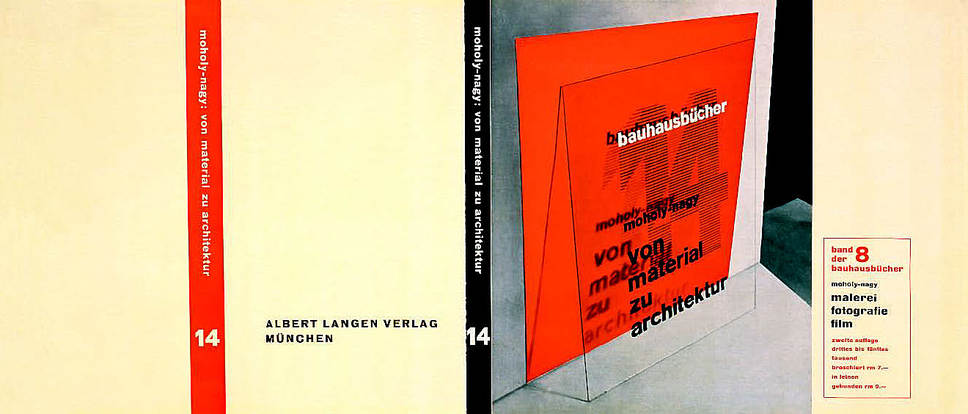
László Moholy-Nagy, Jacket for Bauhaus book 14, 1929
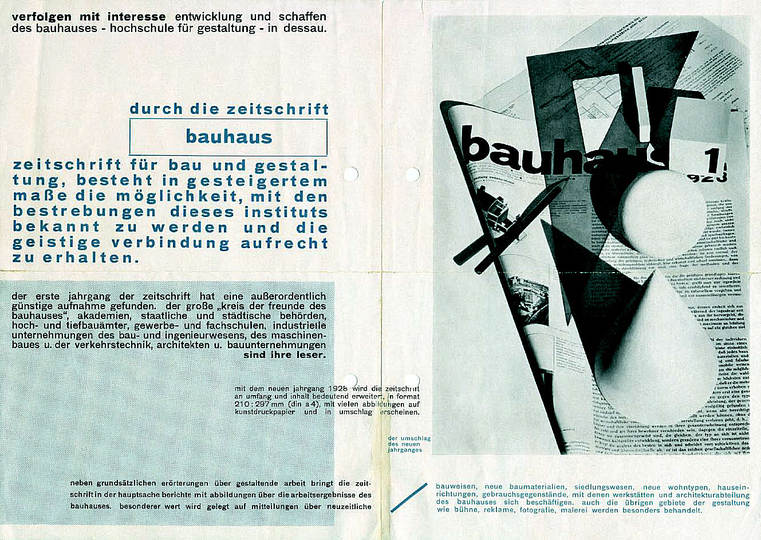
Herbert Bayer, Pamphlet for the Bauhaus revue, 1928
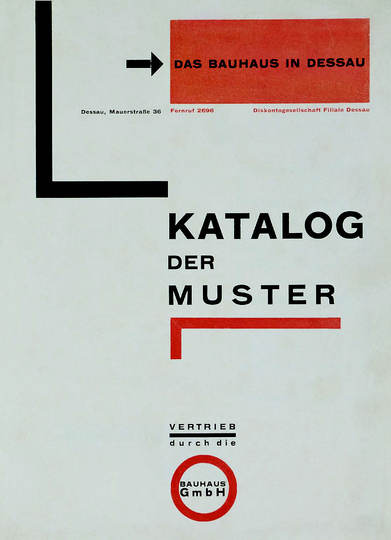
Herbert Bayer, Catalog of Patterns, title page, 1925
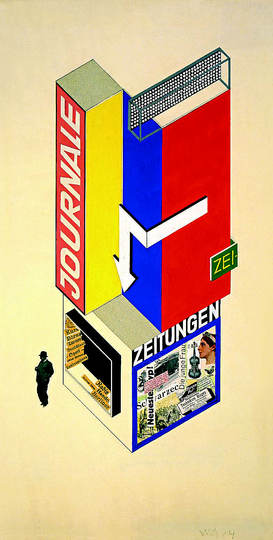
Herbert Bayer, Design for a newspaper kiosk, 1924
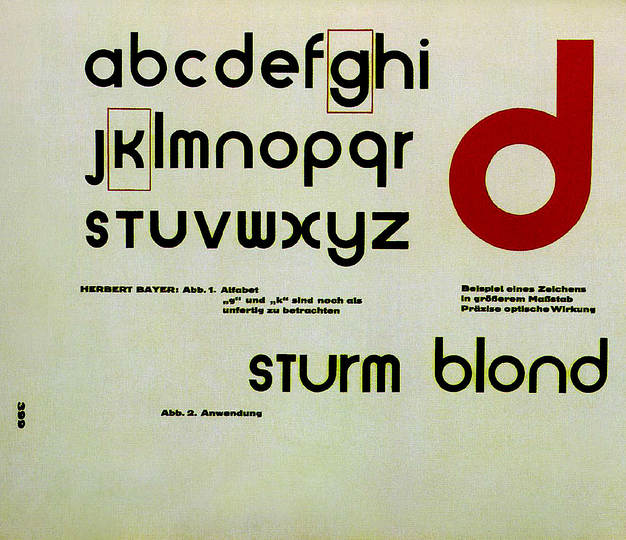
Herbert Bayer, Draft of a universal font, 1926
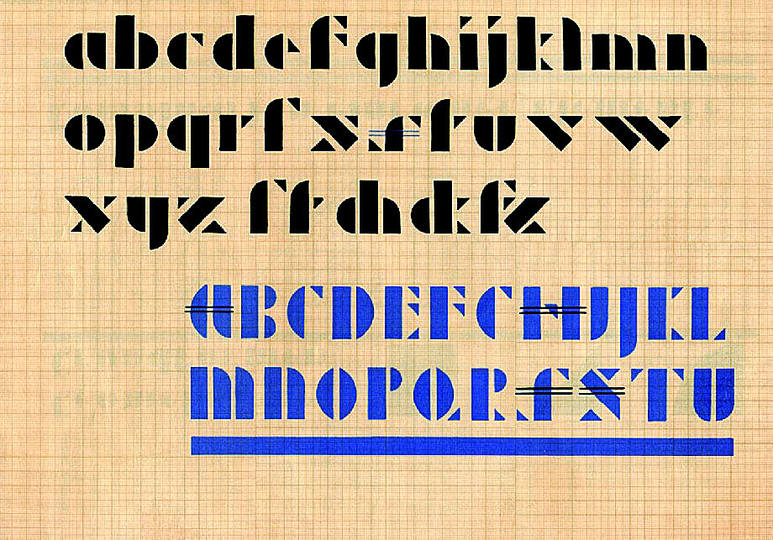
Josef Albers, Font templates, 1923-26
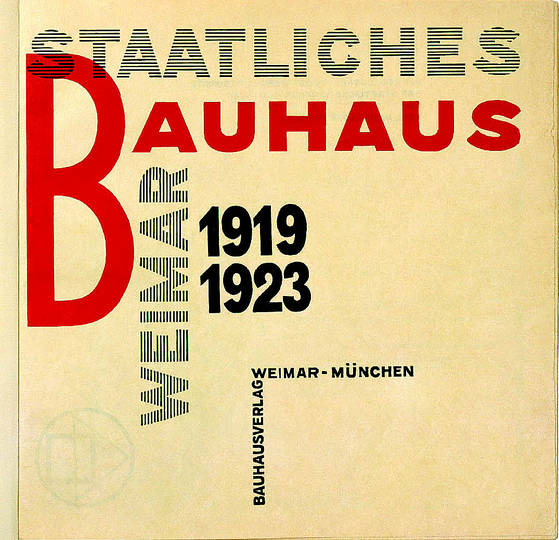
László Moholy-Nagy, Inside title page from Staatliches Bauhaus Weimar 1919-1923, 1923
